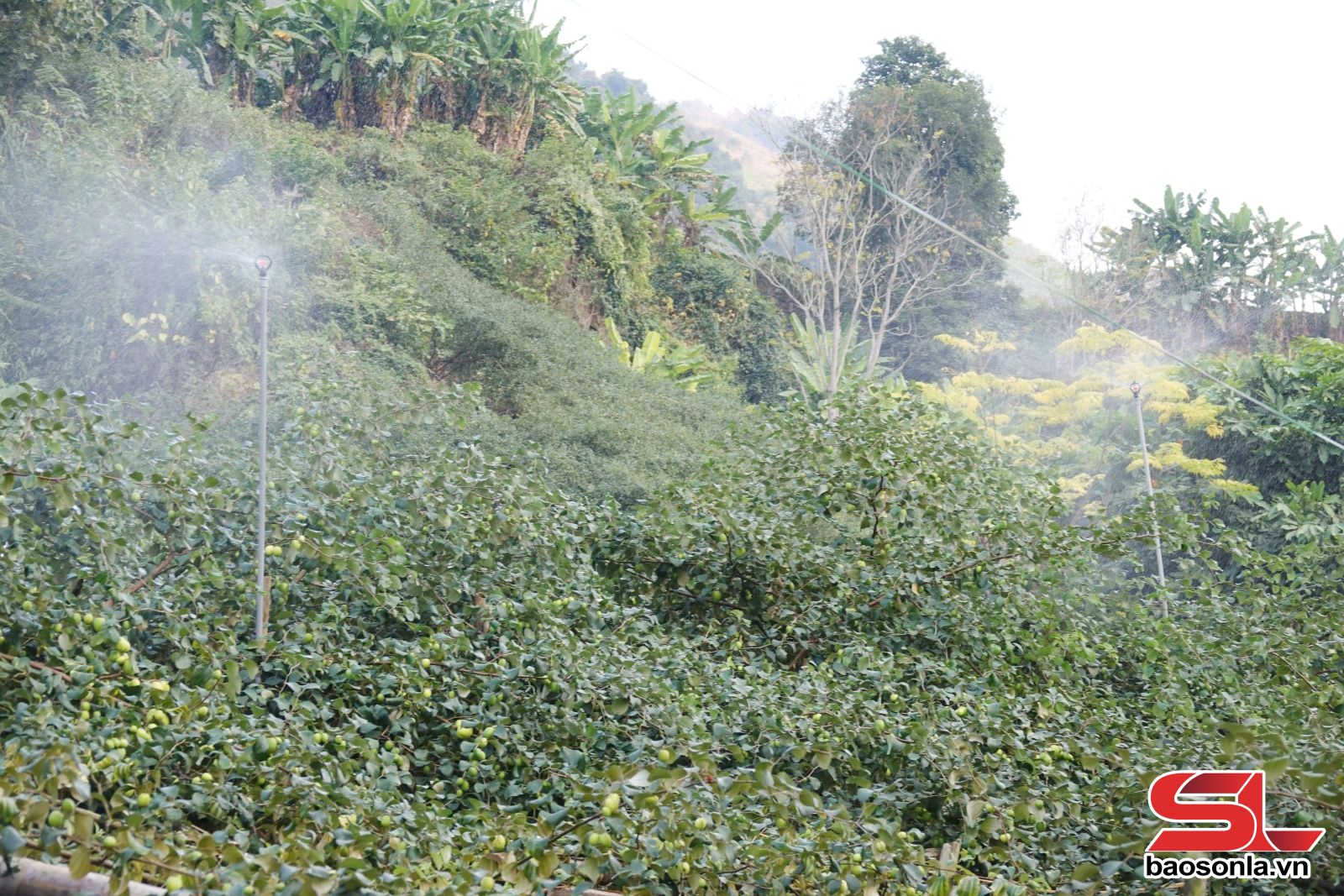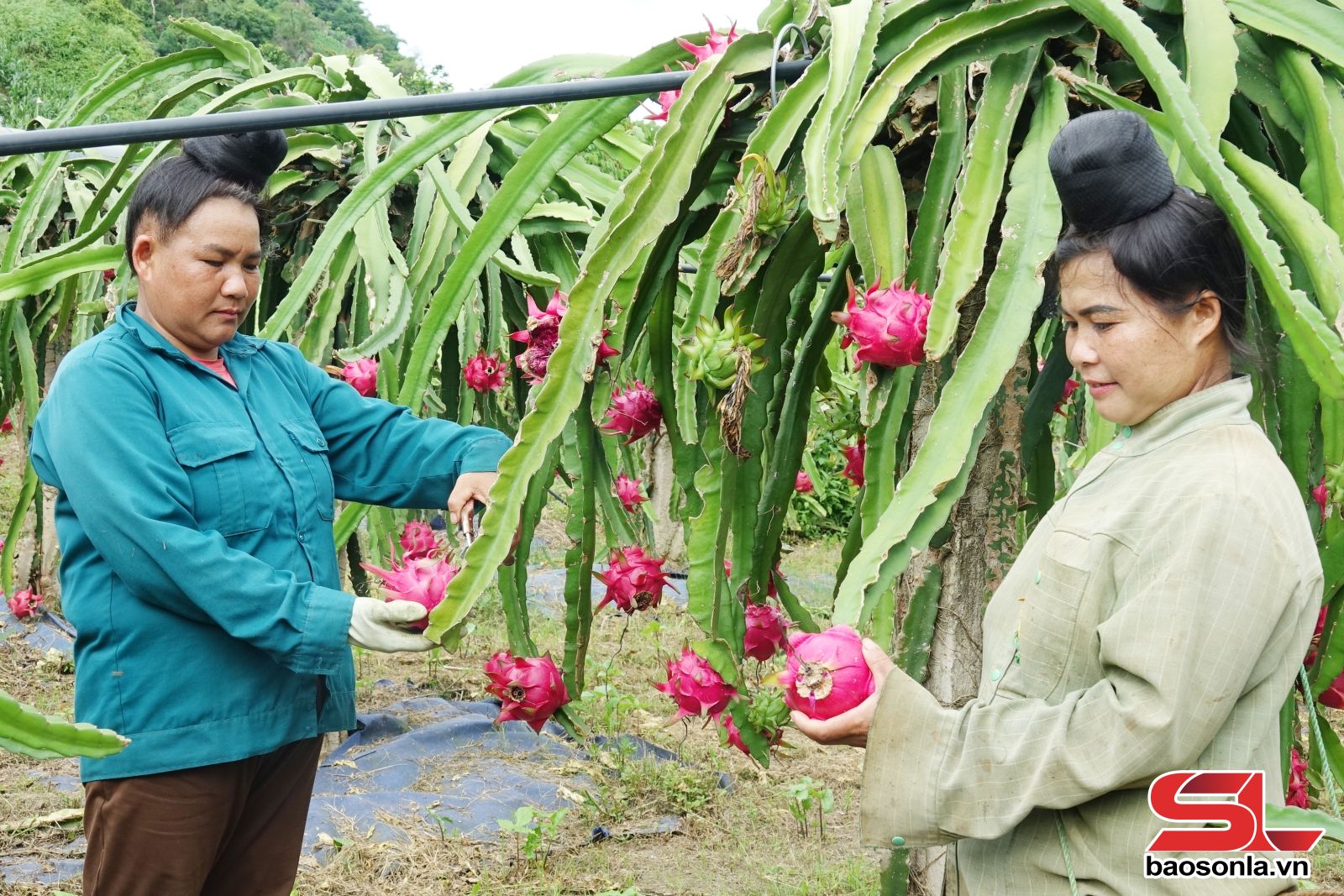.jpg)
A drip irrigation system at Ngoc Chien Fruit and Vegetable Cooperative in Ngoc Chien commune, Muong La district.
On a nearly one-hectare dragon fruit farm in Na Bo commune, Mai Son district, Do Danh Nhat, member of the Ngoc Hoang Agricultural Services Cooperative, harvests more than 30 tonnes of fruit each year thanks to an automated misting irrigation system. With average prices ranging from 18,000 to 25,000 VND per kilogram (about 0.69-0.96 USD), the technology has significantly improved efficiency.
“In the past, manual watering required five people working all day to cover one hectare,” Nhat said. “Now, with drip irrigation, rotary valves and mist sprayers, I can start the system with just a few taps on my smartphone from anywhere.”
Beyond Do Danh Nhat’s family, other members of the Ngoc Hoang Agricultural Services Cooperative are also adopting mechanisation to care for their dragon fruit orchards.
“Since 2019, several members have invested in automated irrigation systems and sensor technologies that monitor environmental and soil conditions around the clock,” said Nguyen Thi Dung, deputy director of the cooperative. “The data is synced to smartphone apps, allowing farmers to adjust care practices remotely. As a result, productivity and fruit quality have improved by around 30%.”
The cooperative currently holds two growing area codes for dragon fruit for export, with surveillance cameras linked directly to the Ministry of Agriculture and Environment. Every stage of production is monitored and recorded in a digital system.

An apple orchard in Muong Bu commune, Muong La district, equipped with sprinkler irrigation system.
The 10-member Phuong Nam Cooperative in Long Phieng commune, Yen Chau district, partners with 30 households to cultivate over 300 hectares of longan, mango and custard apple. Of that area, 60 hectares of mango and longan are equipped with traceability systems to meet standards to be exported to markets including the US, the UK, and China. In the 2024 longan harvest, the cooperative produced more than 4,200 tonnes.
Tran Nhu Kien, Director of the cooperative, said all members now use machinery for soil preparation and have installed automated irrigation systems. In late 2024, several members invested 500 million VND in drones to monitor crops and spray pesticides, helping reduce labour demands, improve productivity, and protect farmers’ health.
In recent years, Son La province has integrated various policies, programmes and projects to support businesses and cooperatives in adopting high-tech solutions and purchasing modern machinery.
According to the provincial Department of Agriculture and Environment, mechanisation in soil preparation has now reached nearly 100% for sugarcane, rubber, and tea, and over 50% for rice, cassava, maize, and coffee.

Farmers in Na Bo commune, Mai Son district, harvest dragon fruit.
The application of technology in crop care and plant protection for rice and other crops has exceeded 40%, while the use of mechanisation in tea harvesting has surpassed 80%. Water-saving irrigation systems are now employed for a variety of crops, including flowers, mushrooms, coffee, tea, sugarcane, vegetables, and fruit trees. Greenhouses and net houses are being used extensively in flower and vegetable production.
In livestock farming, over 80% of pig farms have adopted mechanisation for feeding, watering, and environmental management, while 100% of dairy farms now use milking machines.
Son La province has established nine high-tech agricultural zones, including a tea zone and a dairy farming zone in Moc Chau district; two coffee zones, along with zones for custard apple and mango in Mai Son district; and three zones for longan, mango, and plum in Yen Chau district.
Beyond cutting labour and reducing costs, mechanisation has helped farmers increase profits by 15–20% compared to traditional manual methods.
Aiming to build a modern agricultural sector, Son La province continues to roll out policies and support mechanisms to help businesses, cooperatives and farming households invest in machinery and equipment. The focus is on expanding mechanisation across the entire production chain, from cultivation to harvesting, preservation, and processing, to boost productivity, product quality, and overall value.























You have 500/500 characters left
Please enter 5 or more characters!!!